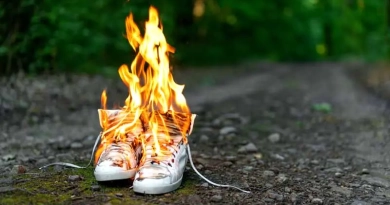
Introduction To Camping
I sit at my kitchen table, envisioning the great outdoors, standing at the edge of the forest, my backpack filled with essentials. And yet, like so many others, I have to wonder: “What is the best way to get started with camping?”
Camping is a timeless activity that offers an escape from the hustle and bustle of everyday life, providing a chance to reconnect with nature. But for beginners, the thought of spending a night outdoors can be daunting. The question of how to start camping, what to bring, and how to ensure a successful and enjoyable trip is crucial.
Exploring the Options and Obstacles
Choosing a Campsite: The first obstacle is selecting the right campsite. Options range from established campgrounds with amenities to backcountry sites that offer a more rugged experience. For beginners, it’s advisable to choose a campsite with facilities such as restrooms and running water to ease the transition into outdoor living.
Purchasing Equipment: Essential gear includes a tent, sleeping bag, and cooking supplies. The market is flooded with options, making it challenging to choose the right equipment. Investing in high-quality, durable gear can enhance your comfort and safety. For instance, a spacious tent that can withstand various weather conditions is crucial.
Understanding Camp Cooking: Cooking in the wild is vastly different from a home kitchen. Camp stoves, portable grills, and fire pits are common cooking methods, each with its own set of challenges. Planning meals that are easy to prepare and require minimal cleanup can significantly improve the camping experience.
Weather and Wildlife: The unpredictability of weather and encounters with wildlife are significant concerns. Being prepared with appropriate clothing, weather gear, and knowledge of local wildlife can mitigate these challenges.
Presenting the Best Solution and How to Implement It
1. Choose Your Destination: Start by selecting a campsite that matches your comfort level. Established campgrounds with facilities are ideal for beginners. Research online or ask for recommendations from experienced campers. Websites like REI and local outdoor forums can provide valuable insights and reviews.
2. Gather essential gear:
- Tent: Choose a tent that is easy to set up and provides adequate space. Practice pitching your tent at home to familiarize yourself with the process.
- Sleeping Bag and Pad: Ensure your sleeping bag is rated for the expected temperature. A sleeping pad will provide insulation from the ground and improve comfort.
- Cooking Supplies: A camp stove or portable grill, pots, pans, and utensils are essential. Plan simple meals and bring snacks to keep energy levels up.
- Lighting: Headlamps, flashlights, and lanterns are crucial for navigating your campsite after dark. A headlamp is particularly useful, as it frees up your hands for other tasks.
- Clothing: Pack layers to adjust to changing weather. Include waterproof gear and sturdy shoes for hiking and exploring.
3. Plan Your Meals: Simplicity is key. Opt for meals that require minimal preparation and cleanup. Pre-packaged foods, sandwiches, and easy-to-cook items like pasta or chili are great options. Don’t forget essentials like water bottles and a means of purifying water if needed.
4. Practice at home: Before heading out, set up your tent and camp in your backyard. This trial run will help you identify any missing items and familiarize yourself with your gear, reducing stress when you are at the actual campsite.
5. Respect Nature: Follow Leave No Trace principles to minimize your environmental impact. This includes packing out all trash, staying on designated trails, and being mindful of wildlife.
Resources and Tools Needed
- Maps and Guidebooks: For navigation and information about your chosen campsite.
- Tent and Sleeping Gear: A durable tent, sleeping bag, and sleeping pad.
- Cooking Supplies: camp stove, pots, pans, and utensils.
- Lighting: headlamps, flashlights, and lanterns.
- Clothing: Layered clothing is suitable for various weather conditions.
- First Aid Kit: Basic medical supplies for emergencies.
- Personal Items: Toiletries, sunscreen, bug spray, and personal medications.
Conclusion
As the day draws to a close and the campfire crackles, you’ll find that the essence of camping lies in simplicity and connection—with nature, with others, and with yourself. By following these steps and preparing adequately, you’ll embark on a journey that not only answers the question of how to start camping but also opens the door to countless adventures in the great outdoors. Whether it’s your first time or you’re a seasoned camper, the key is to embrace the experience with an open heart and a spirit of exploration.






